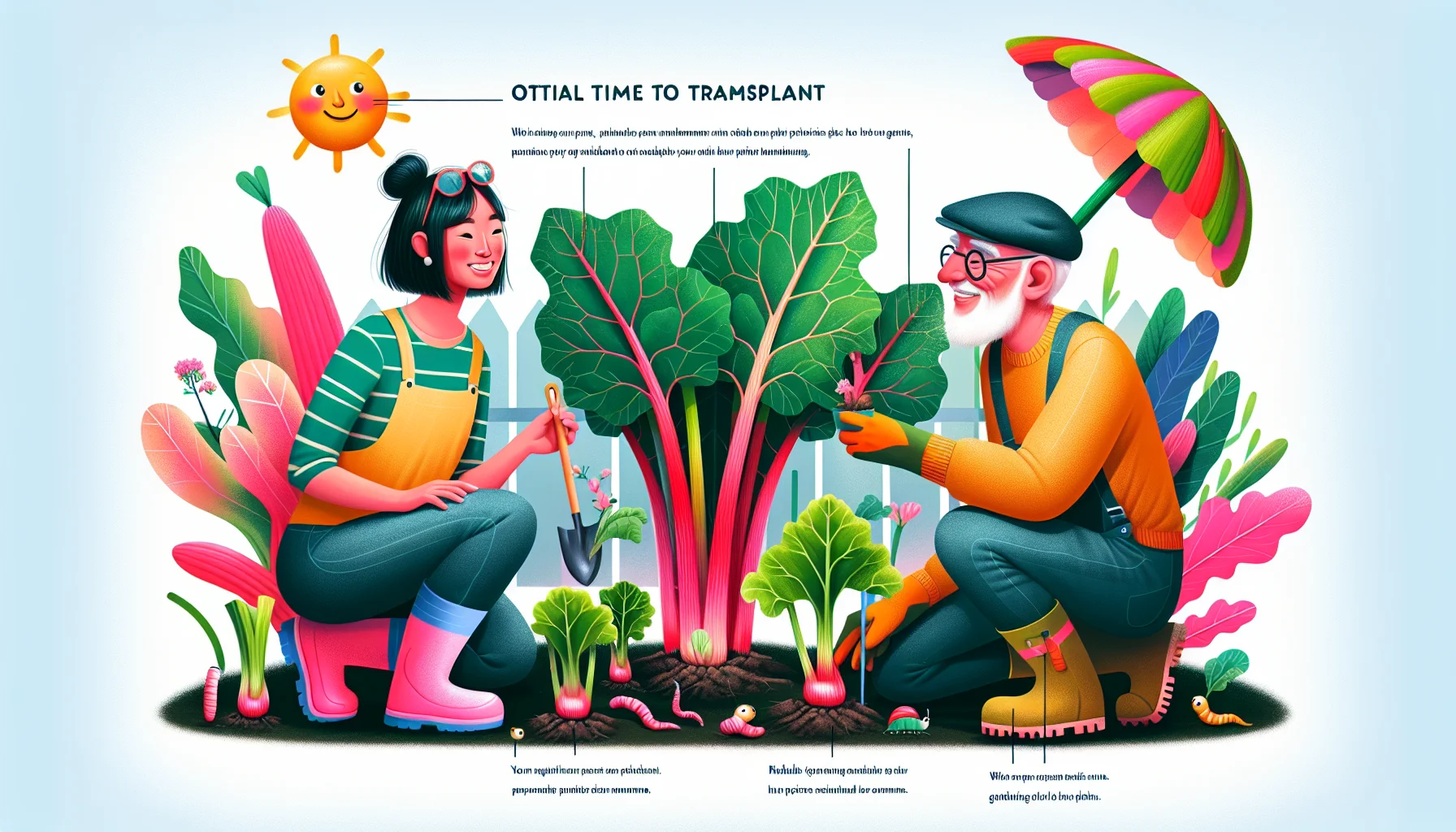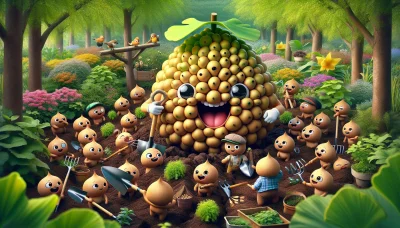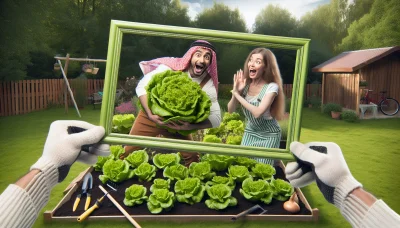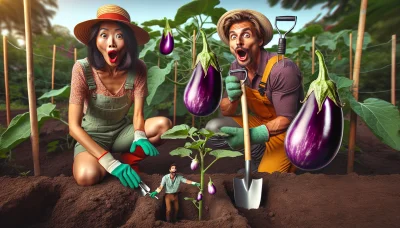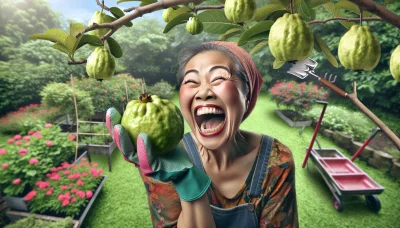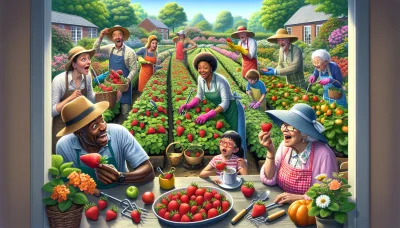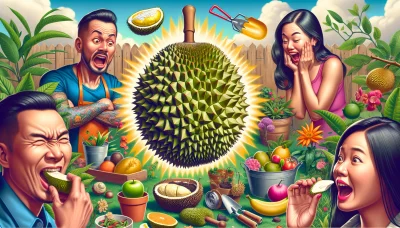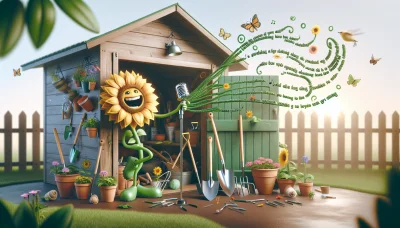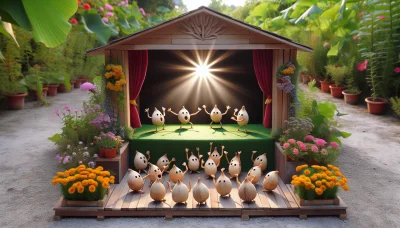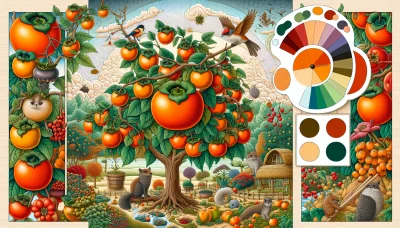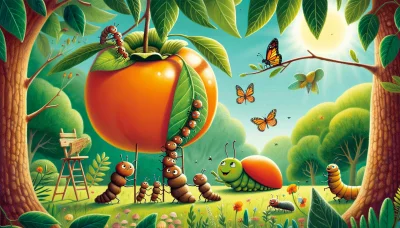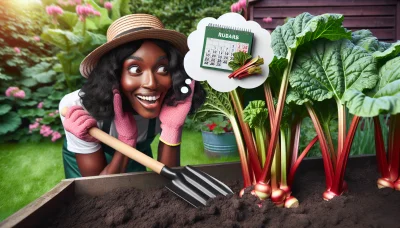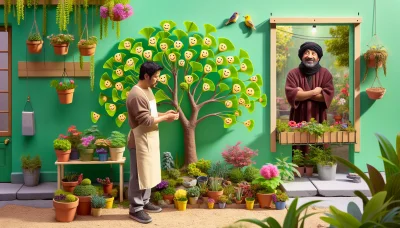Best time to transplant rhubarb Quiz
Test Your Knowledge
Question of
Best Time to Transplant Rhubarb
Timing is crucial when transplanting rhubarb to ensure its successful growth and development. The ideal period for moving rhubarb plants is during the dormancy phase in early spring or fall. This timing allows the plants to establish themselves in their new location without the stress of extreme temperatures or active growth phases. Transplanting in early spring, just as the soil becomes workable but before the plants resume active growth, gives rhubarb the entire growing season to develop a strong root system. Alternatively, fall transplanting should be done after the plants have gone dormant and the foliage has died back, but while the soil is still warm enough to encourage root development before winter sets in. Proper timing, combined with appropriate care, ensures that the rhubarb will thrive in its new location, leading to healthy growth and abundant harvests in future seasons.
Understanding Rhubarb's Growth Cycle
Rhubarb is a perennial plant that has a unique growth cycle, which is essential to understand for optimal cultivation and transplantation. The growth cycle begins in early spring when the temperatures start to warm up. This is when rhubarb starts to sprout from its crown, which is the part of the plant that sits at the soil surface. As the season progresses, rhubarb plants grow large, broad leaves and long stalks, which are the parts of the plant that are harvested. By mid-summer, the plant may produce seed stalks that should be removed to encourage more leaf stalk growth. After the growing season, in late summer and fall, the plant's leaves will yellow and die back as the rhubarb enters dormancy. This dormancy period is crucial as it allows the plant to conserve energy for the next growing season. It is during this dormant period, typically in late fall or early winter when the plant is not actively growing, that is considered the best time for transplantation. Transplanting rhubarb during dormancy minimizes stress on the plant, allowing for better establishment in a new location before the next growing season begins.
Ideal Seasons for Transplanting Rhubarb
- Early Spring: Just as the ground thaws and can be worked, but before the plant breaks dormancy.
- Fall: After the plant has gone dormant, usually late September to early November, depending on your climate zone.
- Cool, Overcast Days: Whether spring or fall, choosing a cool, overcast day can help minimize transplant shock.
Step-by-Step Guide to Transplanting Rhubarb
Transplanting rhubarb can seem daunting, but with the right approach, you can ensure your rhubarb thrives in its new location. Follow these detailed steps to successfully transplant your rhubarb and enjoy its harvest for years to come.
- Choose the Right Time: The best time to transplant rhubarb is in the early spring or fall when the plant is dormant.
- Prepare the New Site: Select a sunny spot with well-draining soil. Enrich the soil with plenty of organic matter.
- Dig Up the Rhubarb: Carefully dig around the rhubarb plant, ensuring you get as much of the root system as possible.
- Divide the Rhubarb: Using a sharp knife, divide the rhubarb into smaller sections, each with at least one bud or "eye."
- Plant the Divisions: Dig holes in the prepared site, spacing the divisions about 3-4 feet apart. Plant them so the buds are just below the surface.
- Water Generously: After planting, water the rhubarb thoroughly to help establish it in its new location.
- Mulch and Care: Apply a layer of mulch around the plants to retain moisture and suppress weeds. Continue to water regularly, especially during dry periods.
- Wait to Harvest: Avoid harvesting any stalks during the first year after transplanting to allow the plant to establish itself. You can begin harvesting in the second year.
Caring for Transplanted Rhubarb
After transplanting rhubarb, it's crucial to provide it with the right conditions to thrive. Initially, ensure the plant is well-watered, especially during the first few weeks, to help establish its roots in the new location. Water deeply once a week, allowing the soil to slightly dry between waterings. Rhubarb benefits from a balanced, slow-release fertilizer applied after transplanting and again in the early spring of the following year. Position your rhubarb in a spot where it can receive full sun, as this promotes strong growth and optimal development. Adequate sun exposure, combined with proper watering and feeding, sets the foundation for a healthy rhubarb plant.
Common Mistakes to Avoid When Transplanting Rhubarb
- Not Preparing the Soil Properly: Rhubarb thrives in well-drained, fertile soil. Amend the soil with compost or well-rotted manure before transplanting to ensure healthy growth.
- Transplanting at the Wrong Time: The best time to transplant rhubarb is in early spring or fall when the plant is dormant. Avoid transplanting in the heat of summer to prevent stress on the plant.
- Planting Too Deep or Too Shallow: Plant rhubarb crowns so that the top of the crown is just at or slightly below the soil surface. Planting too deep can cause rot, while too shallow planting can lead to drying out.
- Overcrowding Plants: Rhubarb needs space to grow. Plant crowns about 3-4 feet apart to ensure there is enough room for growth and air circulation.
- Ignoring Pest and Disease Control: Keep an eye out for common pests and diseases that can affect rhubarb. Implementing preventive measures early can help maintain healthy plants.
- Forgetting to Water Regularly: While rhubarb is somewhat drought tolerant, it benefits from regular watering, especially in dry conditions. Ensure the soil is moist but not waterlogged.
- Harvesting Too Soon: Give your rhubarb time to establish itself before harvesting. Wait until the second year after transplanting to start harvesting to ensure the plant has enough energy to grow strong.
FAQs on Transplanting Rhubarb
| Question | Answer |
|---|---|
| When is the best time to transplant rhubarb? | The best time to transplant rhubarb is in the early spring or fall when the plant is dormant. |
| How do I prepare a rhubarb plant for transplanting? | Prepare the plant by watering it thoroughly a day before transplanting, then carefully dig around the plant, preserving as much of the root system as possible. |
| How deep should I plant rhubarb? | Plant rhubarb so that the top of the root ball is just below the surface of the soil, with the buds or crowns about 2 inches below the soil level. |
| Can I divide rhubarb plants when I transplant them? | Yes, you can divide rhubarb plants during transplantation. Ensure each division has at least one strong bud or crown and a portion of the root system. |
| How much space does a rhubarb plant need? | Rhubarb plants need about 3 to 4 feet of space in each direction to accommodate their large size at maturity. |
| How often should I water newly transplanted rhubarb? | Water newly transplanted rhubarb generously to help establish roots, then water regularly, keeping the soil moist but not waterlogged. |
| When can I expect to harvest rhubarb after transplanting? | It's best to wait until the second year after transplanting to harvest rhubarb, allowing the plant to establish itself and grow strong. |
